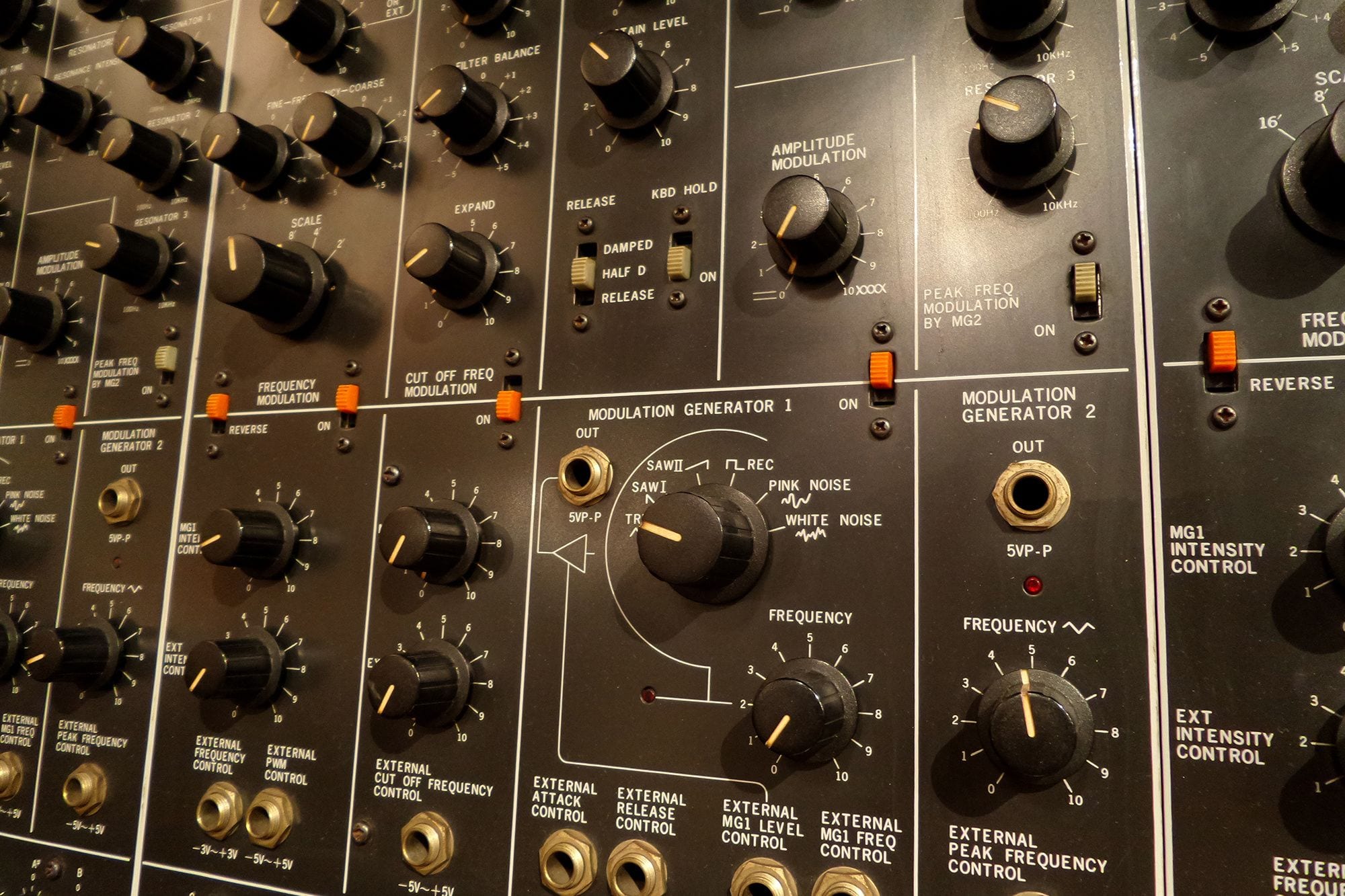Paul McCartney – “Temporary Secretary” (McCartney II)

Talking of Beatles, Paul McCartney put out an electronic single in 1980 that he lifted from his experimental, self-produced McCartney II album. Like on the preceding singles from the same LP, “Coming Up” and “Waterfalls”, Macca played all the instruments himself, though he failed to make this one a hit. It peaked at number 76 in October, maybe because he only released it on 12-inch. It warrants inclusion here, however, because it still shows how the most popular songwriter in the field of British music, having already scored a synth hit with “Wonderful Christmastime” in December ’79, was continuing to help make electronic music a mainstream affair.
“Temporary Secretary” may irritate some folks with its nagging melody and McCartney’s deadpan voice that is intended to imitate a creepy boss looking to hire a temp. But with its prominent sequencer patterns (to simulate a typewriter) and its home-made vintage-synth quirkiness, it holds an important place in the development of British synthpop. Hot Chip, for one, cite it as an influence.
Spandau Ballet – “To Cut a Long Story Short” (Journeys to Glory)

It’s easy to forget that Spandau Ballet were at the forefront of British synthpop in November 1980, when they scored a number five hit with “To Cut a Long Story Short”. The London five-piece, with songwriter Gary Kemp on keys, had been the resident band at the Blitz club. They were consequently New Romantic royalty when they put out their first single, and cocksure of themselves in their frilly shirts, breeches, biker boots, and wedge haircuts. They were mighty serious about their art, too, and sort of had it in mind to reinvent youth culture by giving ‘the kids’ a whole new positive attitude to life, based on individuality. This was after the supposed negativity and regimentalism of punk.
Spandau’s first single, then, is, in many ways, the manifesto of the quintessential Blitz band, and an essential track. It is electronic, crucially, and it is anti-rock, clean, danceable and melodic, with a singer who can actually sing, in an almost operatic way. It recalls “Enola Gay”, too, with its driving synth riff wrapped around some serious subject matter pertaining to war: “Soldier is turning / See him through white light.” It could be about a Vietnam vet with post-traumatic stress disorder. But with the dandified Tony Hadley singing “I am beautiful and clean / And so very very young”, you somehow doubt it. Either way, it’s unlikely the Undertones were impressed.
Robert Palmer – “Looking For Clues” (Clues)

Yorkshire-born Robert Palmer had been making records for five years before having a synthpop hit with “Looking For Clues” at the end of November 1980. It was his 13th single, which rose to number 33. And he released it after venturing into reggae, rock, and blues, with just one minor hit to come of it: “Every Kinda People” in 1978. He lifted “Looking For Clues” from his new wave-influenced Clues album, and put it out on the heels of his first electronic single, “Johnny and Mary”, which, unjustly, failed to make the UK Top 40 in September 1980.
Palmer found some inspiration for his new direction in Numan, having invited him over to Compass Point Studios in the Bahamas to assist on Clues, as unlikely as it may seem. He wrote “Found You Now” with the ex-Tubeway Army man, and got him to play keys on “I Dream of Wires”. However, “Looking For Clues”, while futuristic and possessed of a sparse synth-background, doesn’t sound too much like anything Numan ever did. It is chirpy, uptempo and funky, with an understated, self-harmonized vocal by Palmer, and an infectious melody. On top of that, the lyrics are not about robots or cars or aliens, or even futuristic parks, but rather the paranoia experienced from being in a relationship, delivered in a clever, mock-noir kind of way. Oh, and there is that xylophone solo.
Visage – “Fade to Grey” (Visage)

The culmination of this list is the shimmering synth classic by Visage, “Fade to Grey”. The second single by the group reached number 53 at the very end of December, though it would climb to number eight in January 1981. Billy Currie and Chris Payne composed it (when they were in Numan’s band). Midge Ure provided the lyrics, and produced it. Steve Strange sang it. Rusty Egan’s Belgian girlfriend, Brigitte Ahrens, added the French spoken-word bits. And Rusty himself…well, it’s not really clear what he did. But what a climax to a great year for all of them!
“Fade to Grey” represented the height of the New Romantics’ love affair with synthesizers. It exuded the spirit of the Blitz club, now already closed, as an electronic track to which exotic youths could dance at their most moody and enigmatic. To this end, it featured one of the greatest synth riffs ever, an iconic star in Strange (highlighted to full effect in the accompanying video), and cinematic imagery of the kind Midge was so fond. “One man on a lonely platform / One case sitting by his side.” The French interludes, of course, added to the artiness and sophistication.
The Visage track scaled the UK singles chart amidst a rush of John Lennon re-releases in the aftermath of one of the most tragic events ever in musical history. There was more to be depressed about besides: an economic recession, rising unemployment. But synthpop would continue to offer a way out of the dreariness after 1980 shut its eyes. The likes of Duran Duran, Depeche Mode, Japan, ABC, and Yazoo were waiting in the wings with some sublime synth records. To evoke the words of Churchill himself, slightly out of context, it was the end of the beginning.

